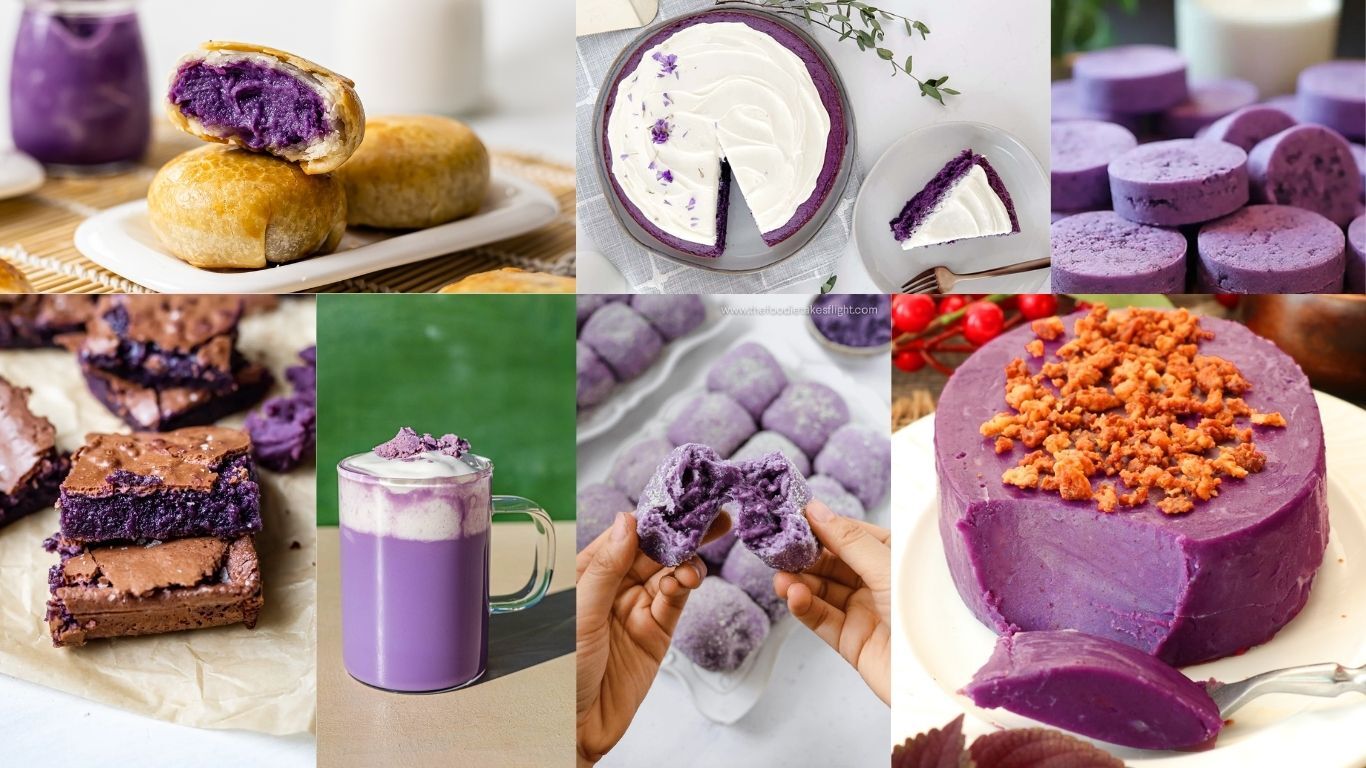Tamarind, a fruit pod with ancient roots in tropical Africa, Asia, and Latin America, is undergoing a significant transition, moving from a traditional staple in these regions to a burgeoning trend within Western cuisines. Its unique and complex sweet-sour flavor profile stands as a primary catalyst for this growing popularity. Industry recognition, notably its designation as McCormick's 2024 Flavor of the Year, coupled with its alignment with powerful macro-trends such as the demand for Global Flavors and "Sour Power," has accelerated its adoption. Western chefs and food developers are increasingly exploring tamarind's versatility, incorporating it across savory dishes, innovative desserts, and complex beverages. Driven by converging consumer interests and industry momentum, tamarind appears poised for continued integration and influence within the Western food culture.
Tamarind's Transcontinental Journey
Tamarind (Tamarindus indica) is the fruit of a long-lived, leguminous tree indigenous to the tropical regions of Africa.1 However, its history is deeply interwoven with the culinary and medicinal traditions of Asia, particularly the Indian subcontinent where it has been cultivated for millennia, Latin America, and the Caribbean.1 The name "tamarind" itself reflects this journey, deriving from the Persian "Tamar-I-hind," meaning "date of India," a testament to its early association with the subcontinent.1 As a monotypic genus (having only one species), Tamarindus indica has spread globally, thriving in warm, sunny climates.1
For centuries, tamarind has been a cornerstone ingredient in the cuisines of these regions. Its characteristic tangy pulp is indispensable in South Asian curries, chutneys, and sauces; it forms the signature flavor base of Southeast Asian dishes like Pad Thai and various soups and marinades; and it features prominently in Latin American aguas frescas (refreshing beverages), candies, and sauces.2 Its presence is even embedded in Western condiments like Worcestershire sauce, where it provides a foundational depth of flavor.5
Despite this rich global history, tamarind's emergence as a culinary trend in Western markets – specifically North America, Europe, and Australia – is a relatively recent phenomenon.6 While immigration has gradually introduced tamarind products over time 6, its current trajectory signifies a broader adoption and integration into mainstream Western food culture. This report seeks to analyze the factors driving this shift, exploring how and why tamarind is capturing the attention of Western chefs, food manufacturers, and consumers now. Understanding this dynamic requires acknowledging that the West is not discovering tamarind, but rather embracing and adapting an ingredient with profound global significance, aligning with contemporary interests in authentic culinary experiences and diverse flavor profiles.11
The Allure of Tamarind: Unpacking its Unique Flavor Profile
The primary appeal of tamarind lies in its distinctive and complex flavor profile, characterized by a remarkable balance between tartness and sweetness.2 This unique taste stems from a combination of naturally occurring organic acids – predominantly tartaric acid, along with malic and citric acids – and natural sugars, primarily invert sugar.3 While acidic varieties are most common globally and form the basis of its culinary reputation, sweeter cultivars, such as Thailand's 'Makham waan', also exist but are less widely available.1
Beyond the fundamental sweet-sour dynamic, tamarind offers layers of flavor complexity. Its taste is often described as tangy and citrus-like, evoking comparisons to lemon and lime, yet it possesses a deeper, fruitier character with subtle notes reminiscent of caramel, dates, or stone fruit.4 This is complemented by potent aromatic qualities, largely derived from volatile compounds and essential oils concentrated in the pulp and rind, contributing floral and sometimes even slightly savory undertones.1 This multifaceted profile differentiates tamarind from simpler souring agents, allowing it to function effectively in a wide array of culinary contexts.
The way tamarind's flavor is delivered in Western markets is heavily influenced by its available forms, which impact both convenience and taste intensity:
- Whole Pods: These offer the freshest, most nuanced flavor but require significant preparation, typically involving cracking the brittle shell, removing fibrous veins, soaking the pulp in warm water, and straining to separate the seeds.15 Sweet varieties can sometimes be eaten directly from the pod.15 Their use in the West is less common outside of specific ethnic markets or dedicated culinary enthusiasts due to the labor involved.
- Pulp Blocks: This traditional form consists of dried, compressed tamarind pulp, often including seeds and fibers. It requires reconstitution (soaking and straining) but provides a concentrated, authentic flavor base.15 Oxidation during drying and storage gives these blocks a characteristic dark brown or black color.15
- Paste: A highly convenient form, tamarind paste consists of seedless pulp diluted with water, ready for direct incorporation into recipes.15 Its consistency and potency can vary between brands; high-quality pastes typically contain only tamarind and water, sometimes with a preservative, avoiding artificial sweeteners.15 This form significantly lowers the barrier to entry for Western chefs and home cooks.
- Concentrate: This is a thick, dark, intensely flavored product with a consistency similar to molasses.15 It provides a powerful tamarind punch and is useful for adding depth to marinades, sauces, and even desserts like caramel.15 It can also be diluted with water to approximate tamarind water or paste.15 Brands like Tamicon are commonly available.15
- Powder: Made from dehydrated and ground tamarind pulp, this form is pungent and highly concentrated.15 While useful for specific applications like flavoring candies, dry rubs, or certain beverages, it generally cannot be substituted directly for paste or concentrate in recipes requiring liquid and texture.
The availability of user-friendly paste and concentrate forms has been instrumental in tamarind's growing accessibility and adoption in Western kitchens, allowing its complex flavor profile to be easily integrated into diverse culinary creations.
Catalysts for Adoption: Why Tamarind is Trending Now
Tamarind's recent surge in popularity within Western culinary circles is not attributable to a single factor but rather a convergence of evolving consumer preferences, strategic industry endorsements, and increased market accessibility.
A. Alignment with Macro Trends
Several dominant food and beverage trends have created a fertile ground for tamarind's acceptance and growth:
- Global Flavors: Western consumers are increasingly adventurous, actively seeking new and exciting taste experiences from around the world.11 Tamarind, with its deep roots in the vibrant cuisines of Africa, South and Southeast Asia, and Latin America, directly satisfies this demand for authenticity and exoticism.11 Its integration allows consumers to explore global culinary traditions through a single, versatile ingredient.
- Sour and Tangy Flavors ("Sour Power"): There is a discernible shift in taste preferences towards bolder, more complex flavor profiles, moving beyond simple sweetness and saltiness.11 The "Sour Power" trend highlights a growing appreciation for acidity and tanginess that awaken the palate. Tamarind's distinctive sweet-sour profile offers a sophisticated alternative to familiar citrus fruits like lemon and lime, providing depth and intrigue.11 The significant growth observed in related categories, such as the sour candy market (projected to reach $3.2 billion by 2033 20), underscores this broader consumer craving for tart and tangy sensations.
- "Thoughtfully Borrowed": This trend reflects a consumer desire for authenticity, heritage, and the stories behind ingredients.11 Tamarind, with its rich history and integral role in numerous traditional cuisines, resonates with consumers seeking meaningful connections to their food. Its adoption in the West is often framed not just as novel, but as an appreciation of its global culinary heritage.
- "Swicy" (Sweet & Spicy): The burgeoning "Swicy" trend, combining sweet and spicy elements, finds a natural partner in tamarind.18 Tamarind's inherent sweet-sour balance provides an ideal foundation for layering heat from chiles (like pasilla, scotch bonnet, or others), creating complex marinades, sauces, and condiments that hit multiple flavor notes simultaneously.6
B. Industry Recognition and Influence
The food industry itself has played a significant role in amplifying tamarind's visibility:
- Flavor of the Year Designation: McCormick & Company naming tamarind its 2024 Flavor of the Year served as a powerful industry endorsement.11 Such declarations from major flavor houses often act as a signal to food manufacturers, restaurant chains, and product developers, validating the trend and encouraging wider experimentation and adoption by reducing perceived market risk.11 McCormick further catalyzed this by launching related products (Tamarind & Pasilla Chile Seasoning) and collaborating with foodservice partners (Black Tap Craft Burgers & Beer) on tamarind-centric menu items, actively driving the trend into the consumer sphere.11
- Chef and Media Influence: Culinary innovators and food media outlets have been instrumental in showcasing tamarind's versatility beyond its traditional applications.6 Publications like Food & Wine and Australian Gourmet Traveller feature recipes highlighting tamarind in contemporary Western contexts, including cocktails, desserts, and fusion dishes.15 Menus from modern restaurants, including New American and gastropub concepts, increasingly list dishes featuring tamarind in glazes, sauces, and dressings, introducing the flavor to a broader dining audience.23
C. Increased Availability and Accessibility
The practical ability for chefs and consumers to obtain and use tamarind has significantly improved:
- Product Availability: Convenient forms, especially tamarind paste and concentrate, are increasingly stocked in Western supermarkets, particularly those with international food sections, as well as in Asian and Indian grocery stores and online platforms like Amazon.13 This widespread availability through indirect sales channels makes the ingredient far more accessible than when it was primarily found only in specialty stores or as whole pods.6
- Ease of Use: The prevalence of ready-to-use pastes and concentrates removes the significant preparation barrier associated with processing whole tamarind pods, making it much simpler for Western kitchens to incorporate the flavor into daily cooking or menu development.15
This confluence of consumer interest in global and tangy flavors, strong industry signals and promotion, chef-led innovation, and the practical availability of user-friendly product forms has created a synergistic effect, propelling tamarind from a niche ethnic ingredient towards mainstream recognition in the West.
Tamarind Takes the Western Stage: Culinary Applications
Reflecting its inherent versatility, tamarind is making inroads across all sections of Western menus, from savory main courses and appetizers to innovative desserts and beverages. Chefs and product developers are leveraging its unique sweet-sour profile to add complexity and intrigue to familiar formats.
A. Savory Innovations
Tamarind's most established role is in savory applications, where its acidity and depth of flavor enhance meats, vegetables, and sauces:
- Sauces, Marinades, and Glazes: Tamarind paste and concentrate are frequently used as foundational elements in Western-style sauces and marinades. Examples include tangy barbecue sauces 24, complex glazes for poultry and seafood (like tamarind teriyaki or tamarind-hoisin 25), potent marinades for grilled chicken or beef 15, and vibrant dipping sauces.17 Its natural acidity helps tenderize proteins while its flavor profile balances richness and adds a bright counterpoint.
- Fusion Cuisine: Tamarind is appearing in contemporary Western restaurant settings, often in dishes that blend global influences. Menus feature items like Tamarind Hoisin Duck 25, Honey-Tamarind Baby Back Ribs 15, Tamarind Beef 15, and fish preparations incorporating tamarind.15 These applications demonstrate chefs pairing tamarind's exotic tang with Western ingredients (like duck or ribs) and cooking techniques (like grilling or slow-roasting).
- Plant-Based Applications: An emerging area is the use of tamarind extract in plant-based meat alternatives.13 Its ability to enhance umami and provide a tangy complexity similar to traditional meat marinades makes it a valuable tool for improving the flavor profile of vegetarian and vegan products, aligning with both plant-based and clean-label trends.13
B. Sweet Surprises
While less common traditionally in the West, tamarind's sweet-sour duality makes it surprisingly effective in desserts and confectionery, where its tartness can cut through richness and balance sweetness:
- Desserts: Innovative pastry chefs are incorporating tamarind into desserts like Tamarind Millionaire's Shortbread, where its acidity provides a foil to the sweet caramel and rich chocolate layers.15 It also lends itself well to frozen applications like sorbets, where its tanginess creates a refreshing finish.10
- Candies: Tamarind is a popular flavor for candies in many parts of the world, often combined with sugar and sometimes chili.5 Western markets are seeing introductions like tamarind pâte de fruit (jelly candies) 15 and potentially other tamarind-flavored confections, capitalizing on the demand for unique sweet-and-sour treats. However, some imported tamarind candies have faced regulatory scrutiny regarding contaminants.5
C. Beverage Boom
Tamarind is proving particularly popular in the beverage category, lending its refreshing tang and complexity to both alcoholic and non-alcoholic drinks:
- Cocktails: Bartenders are embracing tamarind to create sophisticated and unique cocktails. Examples include twists on classics like the Tamarind Whiskey Sour 15 and Tamarind-Mezcal Sour 15, as well as signature creations like Tamarind Bloody Marys 24 or tamarind-infused margaritas.27 Tamarind syrups, purees, or concentrates provide a complex sour element that goes beyond simple citrus juice.28
- Non-Alcoholic Beverages: Tamarind features in refreshing non-alcoholic drinks such as aguas frescas in Latin American style 2, coolers blending tamarind with other fruits like pineapple 15, and innovative lemonades like the Tamarind Lemon Pepper Lemonade.12 Shelf-stable tamarind juices and sodas are also available, catering to the demand for unique, globally inspired thirst-quenchers.9
The ability of tamarind to successfully span savory, sweet, and beverage categories is a significant factor contributing to its growing footprint in the West. This cross-category appeal provides multiple avenues for innovation and numerous touchpoints for consumers to encounter and appreciate its distinctive flavor.
Market Snapshot: Tamarind in the Western Landscape
Understanding tamarind's integration requires examining its market presence, including product availability, forms, pricing, and consumer perception within Western contexts (North America, Europe, Australia).
A. Availability and Forms
Tamarind is increasingly accessible to Western consumers and chefs, primarily through forms processed for convenience:
- Dominant Forms: Tamarind paste and concentrate are the most common and user-friendly forms found in Western retail.13 Pulp blocks are also available, particularly in ethnic markets, while powder serves niche uses. Whole pods remain less common in mainstream channels.15
- Retail Channels: These products are typically found in Asian, Indian, and Latin American grocery stores, the international aisles of larger supermarkets, and increasingly through online retailers like Amazon.5 Indirect sales channels (retail) dominate the market, reflecting consumer reliance on established networks for purchasing ethnic and specialty ingredients.13
- Market Growth: The commercial interest in tamarind is reflected in market forecasts. Reports project significant growth for the tamarind extract market, with estimates suggesting global market values reaching between $730 million and $1.4 billion by the early 2030s, indicating sustained demand and investment.13
- Price Considerations: While convenient, processed tamarind products can be perceived as relatively expensive compared to common staples. Fresh tamarind, when available, can also command premium prices, similar to other specialty imported fruits.16 However, the potency of concentrates and pastes can offer value, as a small amount often suffices. Supply chain factors, including the seasonality of tamarind harvests and dependence on climatic conditions, can also influence price stability and availability.13
Table 1: Tamarind Forms in Western Markets
|
Form |
Description/Characteristics |
Typical Processing Needed |
Key Western Applications (Savory, Sweet, Beverage) |
Relative Availability/Price Point |
|
Whole Pods |
Brittle shell, sticky pulp around seeds; freshest flavor, can be sweet or sour 1 |
Crack, remove veins, soak, strain |
Limited use; some traditional recipes, direct eating (sweet) |
Low / Moderate to High |
|
Pulp Block |
Dried, compressed pulp, seeds, fibers; concentrated flavor, dark color 15 |
Reconstitute (soak, strain) |
Savory (curries, sauces), Beverages |
Moderate / Moderate |
|
Paste |
Seedless, diluted pulp; convenient, ready-to-use, variable consistency 15 |
None |
Savory (sauces, marinades), Sweet, Beverages |
High / Moderate |
|
Concentrate |
Thick, dark, molasses-like; intense flavor, potent 15 |
None (or dilute) |
Savory (marinades), Sweet (caramel), Beverages |
High / Moderate |
|
Powder |
Dehydrated, ground pulp; pungent, concentrated, dry form |
None |
Sweet (candies), Beverages, Dry rubs |
Moderate / Moderate |
(Sources: Primarily 15, supplemented by)
B. Consumer Perception and Familiarity
While industry trends point towards growth, consumer familiarity and acceptance of tamarind in the West appear to be evolving and are not yet universal:
- Growing Awareness: Exposure through restaurants serving Thai, Indian, Mexican, and fusion cuisines, along with its presence in familiar items like Worcestershire sauce and increasing media coverage, is boosting awareness.2 Data indicates a rise in social media conversations about tamarind, suggesting growing interest.30
- Polarizing Flavor: Tamarind's distinct tangy and sour profile, while appealing to many seeking bold flavors, can be challenging for palates unaccustomed to it. Anecdotal evidence, such as mixed reviews for tamarind-flavored consumer products like Cirkul water enhancers, suggests the taste can be divisive, with some finding it unpleasant.31 This indicates a potential gap between industry promotion and universal consumer embrace.
- Association with Diets: Market data suggests a strong association between tamarind consumption and vegan diets.30 This could be due to its plant-based nature, its prominence in cuisines rich in vegan options, and its emerging use in formulating plant-based meat alternatives.13
- Need for Education: The potential unfamiliarity and unique flavor profile suggest that further consumer education regarding tamarind's taste, uses, and cultural background may be beneficial for broader acceptance. Brands incorporating tamarind may need to consider positioning and flavor balancing carefully, potentially introducing it alongside more familiar elements.
Overall, the Western market for tamarind shows strong indicators of growth, driven by accessibility and trend alignment. However, navigating consumer familiarity and the distinct flavor profile remains a key consideration for continued mainstream integration.
The Enduring Appeal and Future Trajectory
Tamarind's journey into the Western culinary mainstream is a compelling example of how global flavors are reshaping contemporary tastes. Its accelerating integration is propelled by a confluence of factors: its intrinsically unique sweet-sour flavor profile offers novelty and complexity; its versatility allows for application across savory, sweet, and beverage categories; and its characteristics align powerfully with dominant consumer trends demanding global authenticity, bolder tangy experiences, and ingredients with rich cultural narratives ("Thoughtfully Borrowed").2
The momentum has been significantly amplified by industry validation, such as its designation as a Flavor of the Year, which encourages broader experimentation by food manufacturers and foodservice operators.11 Concurrently, innovative chefs continue to explore tamarind's potential beyond traditional uses, incorporating it into fusion dishes, craft cocktails, and unexpected desserts, thereby increasing its visibility and appeal.6 Crucially, the increased availability of convenient, ready-to-use forms like paste and concentrate has lowered barriers to adoption for both professionals and home cooks.13
Looking ahead, tamarind is poised to solidify its position in the Western food landscape. Its trajectory suggests a move from a trending ingredient to a more established pantry staple and menu feature. Further innovation is anticipated, particularly in beverages (both alcoholic and non-alcoholic), sophisticated sauces and marinades, unique confectionery, and potentially as a key flavor component in the rapidly growing plant-based food sector.13 While consumer familiarity continues to grow, bridging the gap for palates unaccustomed to its distinct tanginess may require ongoing education and thoughtful product development. Nonetheless, tamarind's compelling flavor, rich history, and alignment with modern culinary desires ensure its enduring appeal and continued ascent as a global flavor sensation enriching Western cuisine.2
Works cited
- Tamarindus indica – A Review of Explored Potentials, accessed May 12, 2025, https://www.iscientific.org/wp-content/uploads/2019/09/8-IJCBS-17-12-8.pdf
- Gastronomy - Tamarind - News Online - Chaine des Rotisseurs, accessed May 12, 2025, https://newsonline.chainedesrotisseurs.com/index.php/story/3340/gastronomy-tamarind.html
- Tamarindus indica: Extent of explored potential - PMC, accessed May 12, 2025, https://pmc.ncbi.nlm.nih.gov/articles/PMC3210002/
- Tamarind | Let's Talk About | B.T. Leigh's Sauces and Rubs, accessed May 12, 2025, https://btleighs.com/blogs/lets-talk-about/tamarind
- Tamarind - Medicinal Spices Exhibit - UCLA Biomedical Library: History & Special Collections, accessed May 12, 2025, https://unitproj.library.ucla.edu/biomed/spice/index.cfm?displayID=25
- Discovering the Tamarind | CIA Culinary School, accessed May 12, 2025, https://www.ciachef.edu/blog/tamarind/
- tamarind Asia | The Herb Society of America Blog - WordPress.com, accessed May 12, 2025, https://herbsocietyblog.wordpress.com/tag/tamarind-asia/
- What IS tamarind? Ultimate explainer guide | Marion's Kitchen, accessed May 12, 2025, https://www.marionskitchen.com/article/what-is-tamarind-explainer-guide/
- Tamarind at Afritibi Market – A Fruit with Multiple Culinary and Nutritional Benefits, accessed May 12, 2025, https://afritibi.com/en/popular-products-at-afritibi-market/tamarind/
- Staple tamarind uses in East African vegan cuisine - NewsBytes, accessed May 12, 2025, https://www.newsbytesapp.com/news/lifestyle/staple-tamarind-uses-in-east-african-vegan-cuisine/story
- McCormick Names Tamarind as 2024 Flavor of the Year | Perfumer ..., accessed May 12, 2025, https://www.perfumerflavorist.com/flavor/trends/news/22882726/mccormick-names-tamarind-as-2024-flavor-of-the-year
- Why you should put tamarind on the menu in 2024 – North Coast ..., accessed May 12, 2025, https://www.northcoastcurrent.com/food-and-brew/2024/01/why-you-should-put-tamarind-on-the-menu-in-2024/
- Tamarind Extract Market Size, Share | CAGR of 5.9%, accessed May 12, 2025, https://market.us/report/tamarind-extract-market/
- Global Tamarind Extract Market Growth, Share, Size, Trends and Forecast (2025 - ReAnIn, accessed May 12, 2025, https://www.testing.reanin.com/reports/global-tamarind-extract-market
- 17 Tantalizing Tamarind Recipes to Try - Food & Wine, accessed May 12, 2025, https://www.foodandwine.com/tamarind-recipes-8410190
- Tomato salad with tamarind dressing - Gourmet Traveller, accessed May 12, 2025, https://www.gourmettraveller.com.au/recipe/chefs-recipes/tomato-salad-with-tamarind-dressing-7333/
- Maggi Tamarina - Tamarind Sauce 425 Grams, Indian Groceries by Maggi - Amazon.com, accessed May 12, 2025, https://www.amazon.com/Maggi-Tamarina-Tamarind-Indian-Groceries/dp/B00U9VZM4Y
- The Food Trends Set to Define 2025 - - Goliath Consulting, accessed May 12, 2025, https://goliathconsulting.blog/2024/11/13/the-food-trends-set-to-define-2025/
- A Review of June 2024 Flavour Trends, accessed May 12, 2025, https://www.flavourtrends.com/wp-content/uploads/2024/07/A-Review-of-June-2024-Flavour-Trends-presented-by-FT.pdf
- Sour Candy Market To Hit USD 3.2 Bn Globally by 2033, accessed May 12, 2025, https://www.news.market.us/sour-candy-market-news/
- I.T.S predicts flavours for an unpredictable world in its 2025 Flavours Report, accessed May 12, 2025, https://www.foodanddrinktechnology.com/news/57563/i-t-s-predicts-flavours-for-an-unpredictable-world-in-its-2025-flavours-report/
- Ham steaks with fried egg and chilli tamarind sauce recipe | Gourmet Traveller - Pinterest, accessed May 12, 2025, https://za.pinterest.com/pin/253679391486720893/
- Our-Menu - Tamarind-Restaurant, accessed May 12, 2025, https://tamarindct.com/our-menu/
- Boma - Flavors of Africa Breakfast Menu | Walt Disney World Resort, accessed May 12, 2025, https://disneyworld.disney.go.com/dining/animal-kingdom-lodge/boma-flavors-of-africa/menus/
- Union New American Restaurant - Tampa, FL | Book on OpenTable, accessed May 12, 2025, https://www.opentable.com/r/union-new-american-tampa
- Lunch menu - Union New American - American Restaurant in Tampa, FL, accessed May 12, 2025, https://www.uniontampa.com/menus/online-ordering-lunch
- Tag: Restaurant Review - Simply Fabulicious - WordPress.com, accessed May 12, 2025, https://simplyfabulicious.wordpress.com/tag/restaurant-review/
- Tamarind Famous Indian Restaurant in London Menus, accessed May 12, 2025, https://www.tamarindrestaurant.com/menus/
- The Tamarind Kitchen bar uses flavours from both Britain and the sub-continent to create cocktails that complement and enhance t, accessed May 12, 2025, https://tamarindkitchen.co.uk/assets/menus/Cocktail-Menu.compressed.pdf
- Tamarind Trends: Data And Analytics - Tastewise, accessed May 12, 2025, https://tastewise.io/foodtrends/tamarind
- tamarind flavor? - Cirkul - Reddit, accessed May 12, 2025, https://www.reddit.com/r/Cirkul/comments/1irz66y/tamarind_flavor/



